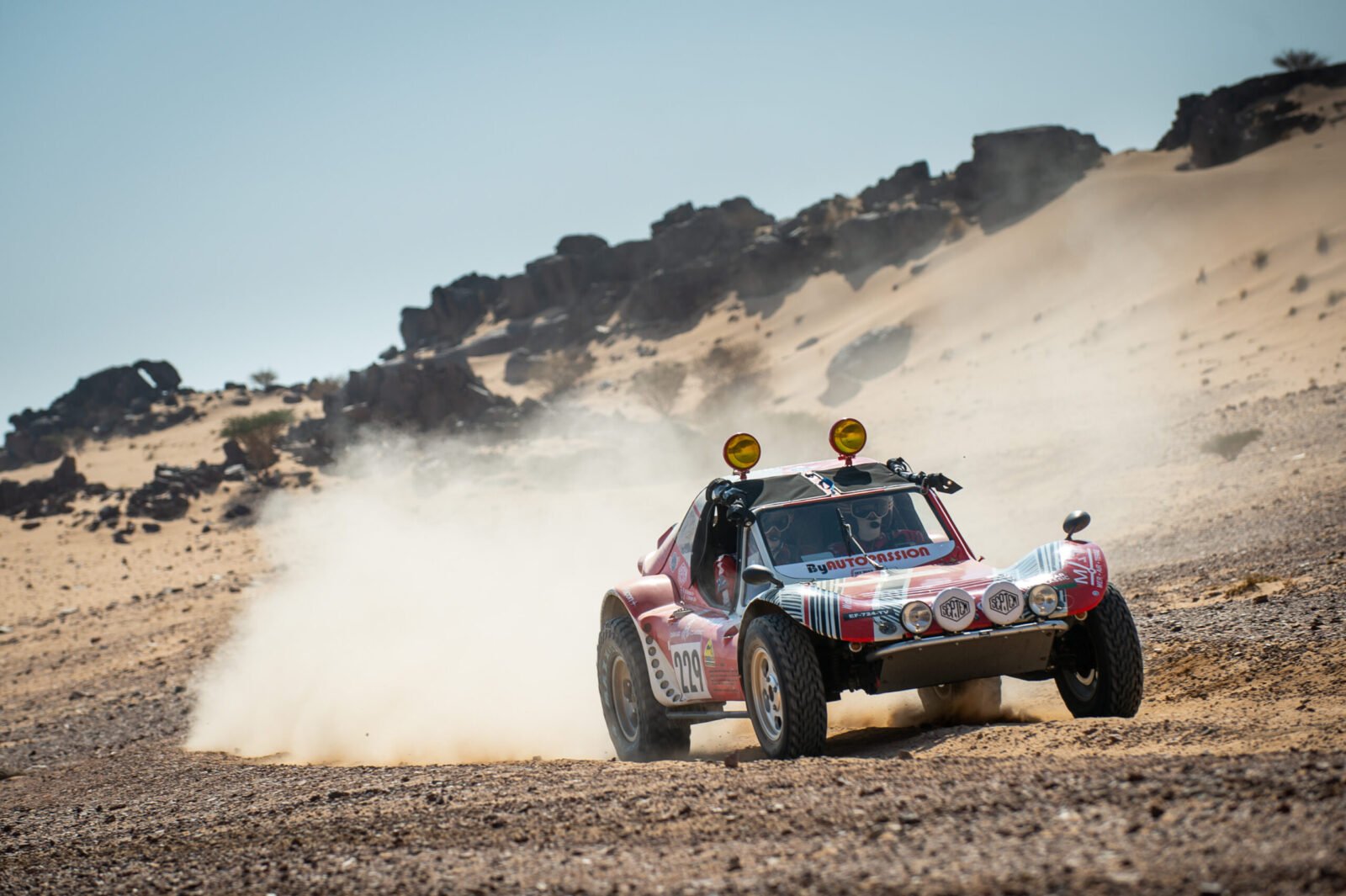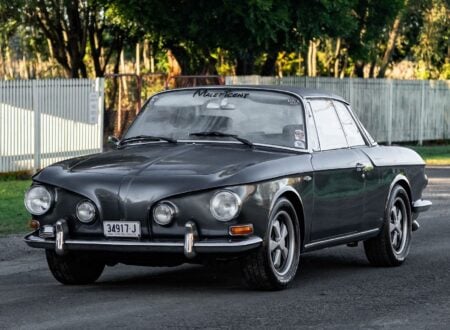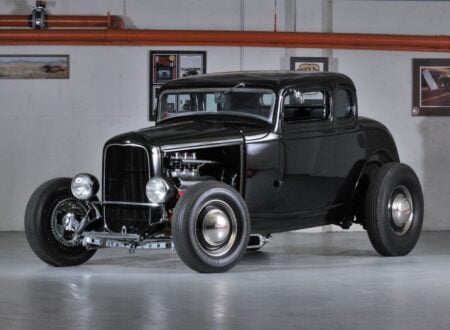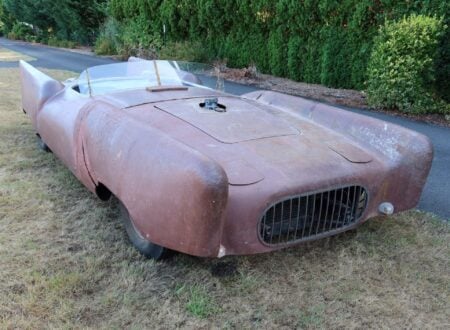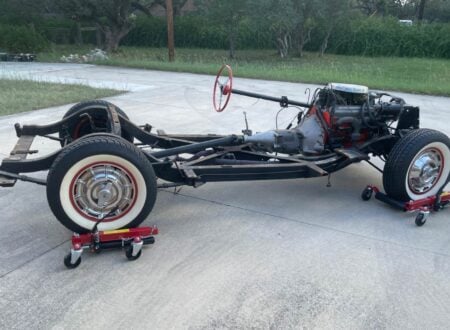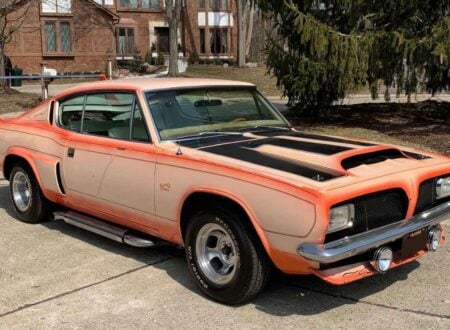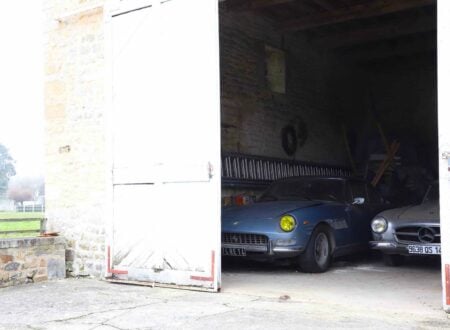In 2021 for the first time ever there was a classic class in the Dakar Rally – allowing the iconic Paris Dakar vehicles of the 1970s, 1980s, and 1990s to once again take to the start line and battle it out against some of the toughest terrain, and competitors, in the world.
The Dakar Classic runs alongside the Dakar on a parallel course, vehicles do often share the start and finish line, and driver briefings are all done together each morning.
Once of the most unusual vehicles to take part in the inaugural Dakar Classic was the car you see here, it was originally built by Yves Sunhill and his crew in 1978 to take part in the first ever Paris Dakar Rally in 1979.
At the time Frenchman Yves Sunhill was traveling frequently to the United States where he became familiar with the heavily modified VW Beetles being used in off-road racing competition. He likely also saw some of the many Meyers Manx vehicles that were proving almost unstoppable in many desert races – these also shared VW Beetle underpinnings of course.
When Sunhill and his small team set about designing their own new racing buggy to take part in a new kind of desert race from Paris, France to Dakar, Morocco he took the lessons he had learned in the USA and modified them to suit this new race.
Sunhill Buggy was given a custom space frame chassis that offered excellent rigidity and protection for both the driver and co-driver. This was then mated to a modified front and rear end from a VW Beetle, a Beetle gearbox was also used however interestingly they didn’t use a VW engine – instead opting for an engine from a Renault 16.
Above Image: Watch the highlights of the 2021 Dakar including footage of the buggy shown here.
Though this engine choice may seem odd it was likely made for two reasons, firstly they had good access to performance parts and experts for the French engine, and secondly the Renault 16 engine is water-cooled and therefore may have been preferred for racing in the baking temperatures of the North African desert.
The Renault engine was rebuilt by engineers at Alpine specifically for motorsport use, they took the standard 1600cc inline-four and stroked it, a series of other modifications gave it a power output of 160 bhp – a marked increase from the original 61 bhp.
The central section of the car is covered in sheet steel, and the front and rear sections use fiberglass panels which were designed by Sunhill himself. As a designer he carefully developed the car and the seating position to give both the driver and co-driver excellent front and side visibility to better navigate unpredictable terrain.
For the inaugural 1979 Paris Dakar Rally Yves Sunhill set off with Jean-Paul Sevin and made a remarkably promising start. Unfortunately in Niger they suffered a cracked heat exchanger and were forced to retire.
The buggy would stay in Niger in the possession of a French expat resident, and it was shown at a number of events over the years celebrating the history of the race.
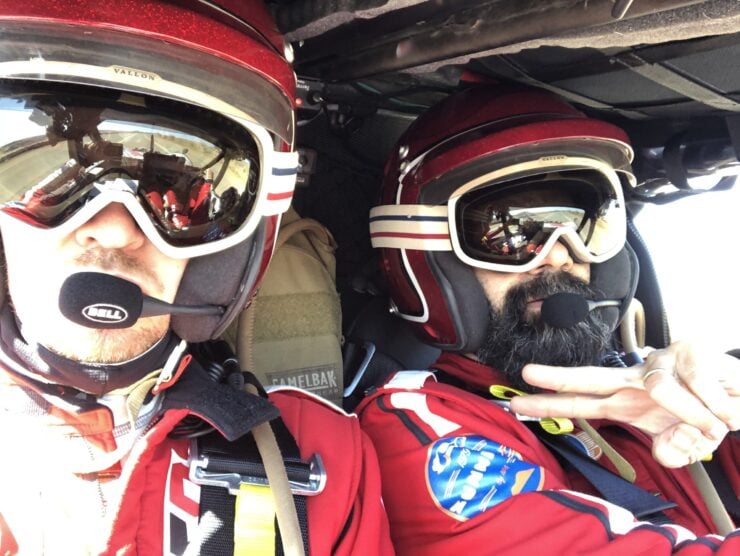
Above Image: It was a tight fit inside the Sunhill Buggy, hundreds of kilometers were covered like this each day.
Many years later the original buggy was acquired by Marc Douton who would drive the car alongside co-driver Emilien Etienne. The buggy was completely stripped and rebuilt in collaboration with Nantes Prestige Auto run by Jeremy Athimon specifically to compete in the 2021 Dakar Classic.
Douton and Etienne are no newcomers to the sport, Douton has been racing off-road since he was 10 and together the two men raced together in a Buggy Baboulin in 2016 before winning the Moroccan VW Africa Trophy in 2017 and 2019.
The buggy needed a complete restoration and a new engine, the frame also needed serious modifications as both the original occupants had been below 165cm in height, but Douton and Etienne are 176cm and 186cm respectively. This required modifying the frame elements under the floor to lower both seats safely, without needing to cut into the overhead sections of the roll cage.
The vehicle is now equipped with a 1,600cc VW Beetle engine that was modified for racing by BR Concept, it now has a swept capacity of 2,110cc and 130 bhp – the engine was built specifically to produce as much torque as possible through the entire rev-range.
Elsewhere the chassis was reinforced for added strength, the suspension was upgraded, and the safety equipment was brought up to 2021 standards.
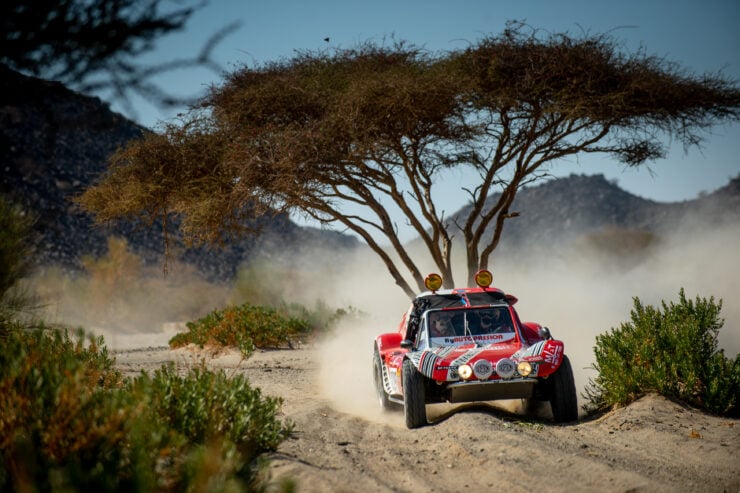
Above Image: The Sunhill Buggy was well suited to the terrain, taking 7 of 12 stage wins and winning the overall event.
Both the driver and co-driver were fitted out with sunglasses and goggles by team sponsor Vallon, these were chosen because they fit the retro-theme of the Dakar Classic but they still provide full modern protection.
Back in 1979 Yves Sunhill and Jean-Paul Sevin had shown the potential of this vehicle, and in 2021 Marc Douton and Emilien Etienne would finish the story. They led the race from day one to the podium, winning 7 of the 12 stages, and winning the first Dakar Classic outright in a convincing fashion.
The plans for the future include modifying the buggy with electric motors and either batteries or a fuel cell, they plan to continue racing it extensively so we’ll doubtless be seeing it on the top step of the podium again.
If you’d like to read more about the Dakar Classic you can click here, and if you’d like to see Marc Douton and Emilien Etienne’s profile page you can click here.
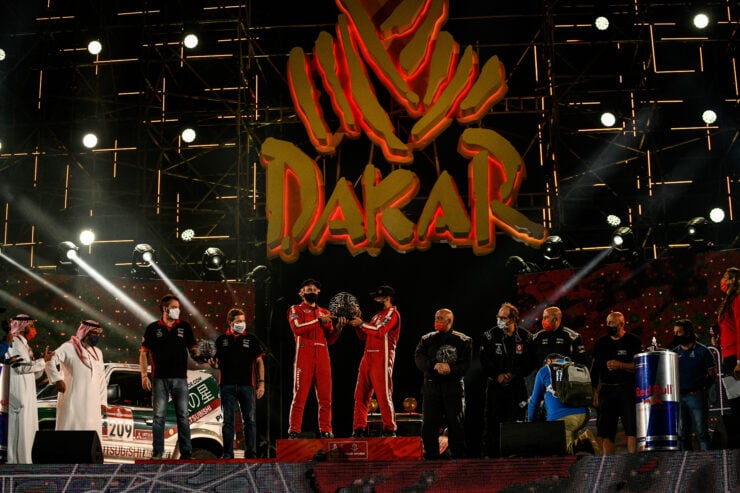
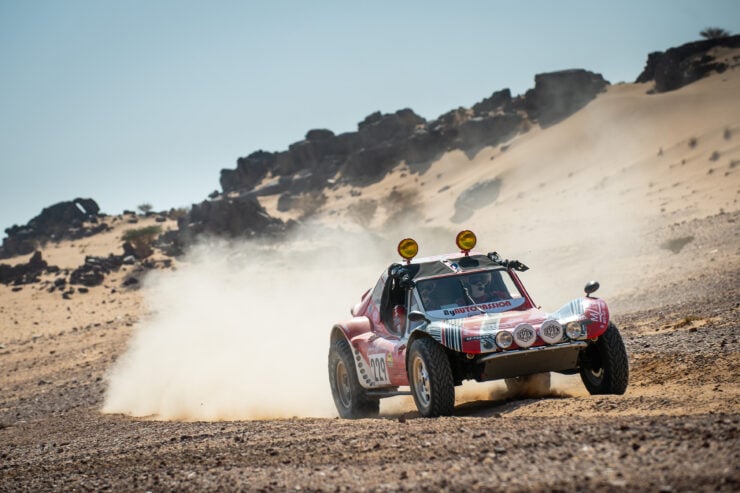
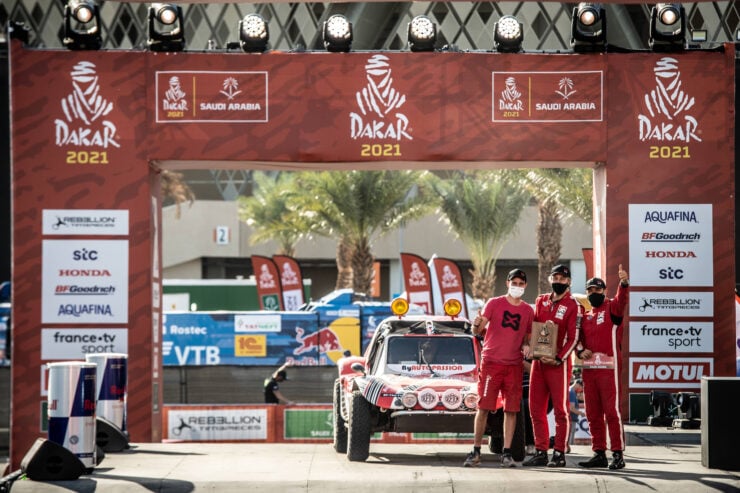
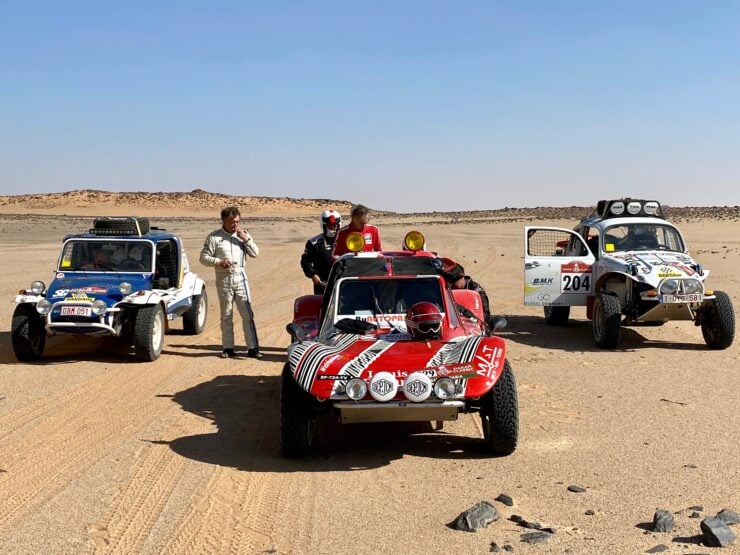
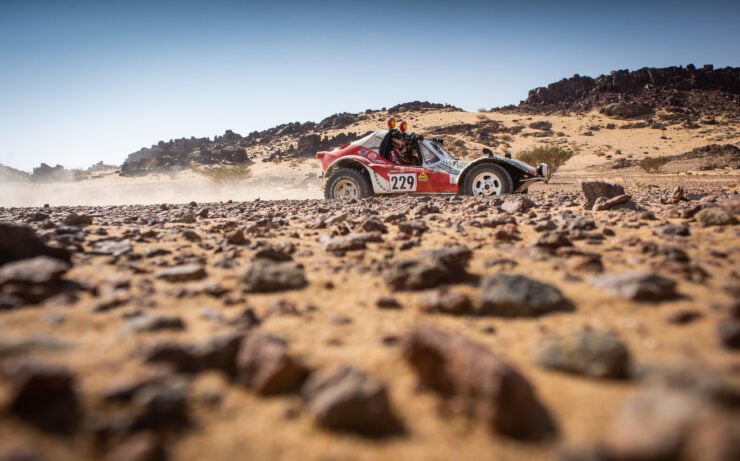
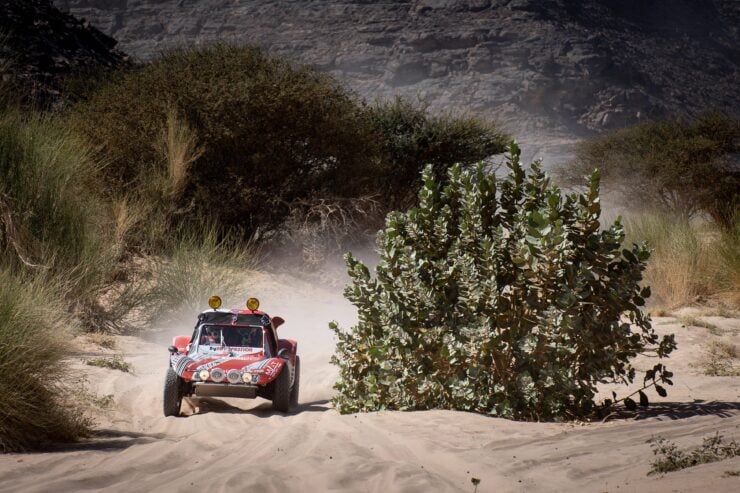
Images courtesy of Dakar®

